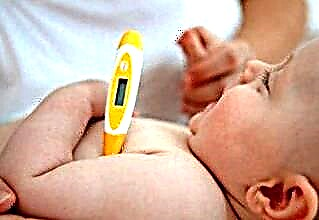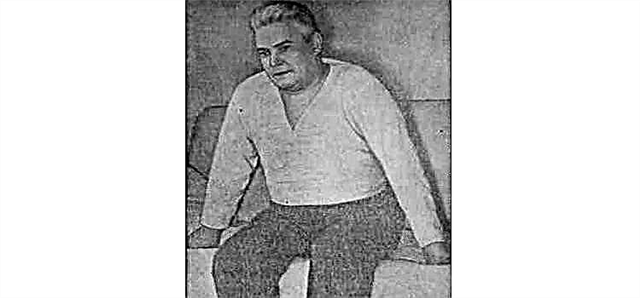What are extrasystoles and are they life-threatening?
Extrasystoles are premature excitations of the myocardium, which lead to its extraordinary contraction. In this case, activation of the entire heart muscle or its individual parts is possible.
In a healthy person, with a round-the-clock recording of an ECG (electrocardiogram), with a probability of 50%, extrasystoles will be recorded. They are single, occur very rarely, have no clinical manifestations and do not carry any danger.
However, if extrasystoles follow each other, this can lead to irreversible hemodynamic disturbances due to a drop in the pumping activity of the left ventricle.
Prognostic classification of extrasystoles (J.T. Bigger):
| Class | Characteristic | Forecast |
|---|---|---|
| Safe | Episodes of ventricular extrasystoles and short tachycardia, which do not lead to hemodynamic disturbances | The same as in the healthy part of the population. No medical correction required |
| Potentially dangerous | Frequent, polymorphic, paired extrasystoles in patients with structural changes in the myocardium that do not lead to significant circulatory disorders | There is a need for therapy, but the compensatory possibilities are great |
| Life-threatening | Episodes of ventricular tachycardia, which lead to significant hemodynamic disturbances in patients with significant pathology of the heart muscle | It is necessary to remove the cause that provokes the arrhythmia. Symptomatic treatment is mandatory |
What are the symptoms of pathology
Symptoms of extrasystole are:
- periodic sensation of a heart beat;
- freezing in the chest;
- feeling that the heartbeat is irregular;
- lack of air against the background of chest discomfort;
- failure of the rhythm of breathing;
- syncope (temporary loss of consciousness).
The occurrence of extrasystoles in the supine position
If the sensation of a change in the work of the myocardium is manifested in the supine position, this indicates the functional nature of the arising extrasystoles. Symptoms disappear with the transition to a sitting position, the pulse becomes rhythmic. Such arrhythmia does not pose a danger to the body. In this case, the standard drug therapy will be ineffective, the effective way out will be the use of sedatives.
Causes
Extrasystoles occur in the heart as a result of structural or functional changes in the myocardium. They may be due to:
- heart disease (angina pectoris, defects, cardiomyopathies, myocarditis, cardiomyofibrosis, heart failure);
- electrolyte disturbances (hypokalemia, hyperkalemia, hypomagnesemia, hypocalcemia) or acid-base balance;
- hypoxia (due to chronic lung diseases);
- chronically high or low blood pressure;
- injuries (chest, brain and spinal cord);
- manipulations on the heart (surgical and diagnostic interventions);
- disorders of the functions of the autonomic nervous system (structural changes, VSD (vegetative vascular dystonia), lack of sleep, stress and neuroses);
- hormonal imbalance with menopause (estrogen deficiency);
- immaturity of the cardiac conduction system in newborns;
- psychoemotional stress and constant training in athletes (extraordinary contractions occur against the background of bradycardia);
- redistribution of blood flow and changes in hormonal levels during pregnancy;
- activation of pathological reflexes due to:
- diseases of the digestive system (pancreatitis, ulcer, gallstone disease, enterocolitis, severe flatulence);
- pathology of the cervical and thoracic spine (spondyloarthrosis, osteochondrosis);
- diseases of the bronchopulmonary system (with a strong prolonged cough);
- prostate adenoma;
- diagnostic procedures:
- endoscopic examinations (bronchoscopy, laparoscopy, gastroscopy, cystoscopy, colposcopy, sigmoidoscopy);
- puncture;
- allergic reactions (food, household, professional, medication or microbial origin);
- toxic effects of drugs:
- cardiac glycosides;
- anesthetic drugs (typical for ether, fluorothane, cyclopropane);
- morphine;
- glucocorticosteroids;
- potassium and calcium preparations;
- tricyclic antidepressants;
- salicylates.
The described factors contribute to the violation of the functional and structural integrity of the pathways of the impulse in the myocardium. Instead of a clear directional movement (from the atrium to the ventricle), the depolarization wave returns in a circle to the starting point, as a result of which the contraction mechanism is triggered again and an extraordinary heart beat occurs.
Another mechanism for the occurrence of extraordinary contractions is the presence of ectopic (abnormal) foci of impulse generation. Activating asynchronously to the sinus node (the main pacemaker), they trigger an extraordinary contraction of the myocardium.
Types and classification
It is possible to identify extrasystole using the analysis of round-the-clock ECG monitoring.
Classification of extrasystoles at the place of origin:
| View | Subspecies | What pathology is it typical for | When occurs with intact myocardium |
|---|---|---|---|
Supraventricular (supraventricular) |
| Myocarditis, atherosclerotic cardiosclerosis, chronic pulmonary heart disease | More often they are functional due to stress, alcohol, coffee and strong tea consumption, smoking |
Ventricular (ventricular) |
| Ischemic disease (acute - myocardial infarction, chronic - angina pectoris), acquired valvular heart disease, hypertension, non-coronary myocardial damage | For diseases of the biliary tract, diaphragmatic hernia |
Monomorphic extrasystoles appear on the ECG in the form of identical single extraordinary complexes. Their shape depends on the localization. The frequency of occurrence of rare - up to 29 per hour, frequent - from 30 times and higher.
Allorrhythmia attacks are characterized by a correct change in the normal heart rate and extrasystolic episodes:
- bigeminia - a normal contraction replaces each extrasystole;
- trigeminia - an extraordinary heart beat occurs after two standard ones;
- quadrigeminia - every fourth myocardial contraction occurs earlier than expected.
Paired are two extrasystoles in a row. The early ones are those that arise before the end of the full cycle of cardiac activity, recorded by an electrographic method.
Polymorphic extrasystoles
An ECG is a recording of electrical potentials that occur when cardiomyocytes work. Their sum appears in the form of a curve obtained by electrocardiography. The line has a standard shape, provided that an impulse is generated in the sinus node. If the generation of potential begins in a different place, a complex of teeth and segments of a completely different nature is displayed. As a result, the right ventricular extrasystole differs from the left ventricular one.
Polymorphic (different in shape) extrasystoles are visible on the ECG, provided that each extraordinary contraction was started in the wrong part of the myocardium as before. This means that the cause of arrhythmia is not local dysfunction, but damage to a large area of the heart muscle.
Group extrasystoles
They appear in an amount of 3-5 pieces one after the other.The impulse circulates through the myocardium, which has lost the ability to become refractory (immune to depolarization).
If the ECG registers only extrasystoles within half a minute, they are called "unstable tachycardia".
Treatment
Classes of antiarrhythmic drugs used:
- fast sodium channel blockers:
- slightly affecting conductivity: lidocaine, phenytoin, mexiletine;
- moderately slowing down the passage of the impulse: aymalin, quinidine, procainamide;
- significantly inhibiting depolarization: propafenone, etacizin, alapinin;
- β-adrenergic receptor blockers without internal sympathomimetic activity: bisoprolol (Concor), propranolol, metoprolol, esmolol, atenolol, nebivolol;
- drugs that lengthen the refractory phase through action on potassium channels: amiodarone, sotalol, azimilide, dofetilide, dronedarone;
- calcium channel blockers: verapamil, diltiazem.
Reviews studies and self-administration of drugs for arrhythmic manifestations for some reason turn out to be ineffective. Only a doctor can make a diagnosis after analyzing the ECG, he will also select the appropriate drug in an individual dosage.
To enhance the antiarrhythmic effect, drugs of different groups are used in combination.
How to get rid of extrasystole and remove its manifestations
Extrasystole does not occur on its own. It is a manifestation of pathological processes occurring in the myocardium or other organs.
To get rid of arrhythmias, you must:
- Find a specialist to assess the risk and design a treatment program.
- Make lifestyle adjustments
- quitting smoking, alcohol, coffee and strong tea;
- healthy food;
- adequate physical activity;
- minimization of stress factors.
- Confirm the need for therapy.
- Eliminate the cause (surgery may be required).
- Select a drug treatment regimen.
Clinical symptoms and treatment of extrasystole are in direct proportion: the more serious the changes in the patient's condition, the more radical therapy he will need.
Conclusions
Extrasystole is an extraordinary generation of an impulse followed by a contraction of cardiomyocytes. Extrasystoles are sometimes harmless, and in other cases they can provoke atrial fibrillation, the consequence of which will be sudden death.
The army will perceive a cardiological conclusion on the presence of polymorphic, paired or group extrasystoles negatively and deny the man the opportunity to serve.
Prevention of extrasystole is a healthy lifestyle (physical exercise during sedentary work is required).



